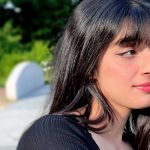Since the release of The Legend of Zelda: Tears of the Kingdom, there has been speculation among fans that the shrine names in the game might be anagrams of the names of certain landmarks or locations in Kyoto, Japan. Inspired by this, one user tried to solve the anagrams and match up the shrines in the game with real locations in Kyoto using a map of the city. This led them to discover that the layout of the shrines of Hyrule align with the city of Kyoto to a surprising extent, causing excitement among fans.
The Legend of Zelda: Tears of the Kingdom is set in the fantasy world of Hyrule, which has been the setting for the majority of the Zelda titles, with its geography and characteristic evolving and changing with each new title. Hyrule become a seamless open world starting from the previous title The Legend of Zelda: Breath of the Wild, with its careful worldbuilding making players want to explore every nook and cranny of the magical realm.
Though entirely a fantasy world, what gives Hyrule its appeal and monumentality is no doubt the way it’s subtly based on reality. The director of Breath of the Wild Hidemaro Fujibayashi talked about how the world of Breath of the Wild is based on Kyoto, which is his hometown and also where Nintendo’s head office is located. He mentions how using the geography of the city of Kyoto as a base helped define the size of the world and determine the relative distances of different locations in the world. The sequel and latest title, Tears of the Kingdom, seems to have kept the connection to Kyoto.
Hearing speculation that the names of the shrines in Tears of the Kingdom are likely anagrams of names of locations in Kyoto, Japanese Twitter user @SO_far_69 rolled out a map of the city of Kyoto and set out to match up the shrines in the game with real life locations. They identified the original names one by one, placing sticky notes to mark the locations of the shrines. As they matched up a significant number of shrines, they discovered that the layout of the shrines in-game matches the layout of the city of Kyoto to a surprising extent.
Here are a few examples of the anagrams discovered (as spotted by Inside).
Sihajog Shrine (jp: Shihajogo), anagram of Gojohashi.
Kikakin Shrine (jp: Kikakun), anagram of Kinkaku shrine.
Kisinona Shrine (jp: Kishinona), anagram of Nashinoki shrine.
Mayachin Shrine (jp: Mayahishika), anagram of Higashiyama.
Kyoto is characteristic for being the old capital of Japan, it has a long history and thus is full of cultural, religious and historical landmarks. The Kinkaku Shrine, also known as the Golden Pavilion, from which the name of the in-game Kikakin Shrine was derived is one such example. The city is also specific in that its original layout was meticulously designed into a grid pattern based on an ancient Chinese model of city planning. These factors may have also influenced some of the choices of the creators.
The cultural importance of Kyoto makes it an ever-present influence in Japanese media and is no doubt part of why fans are fascinated by the connections which were discovered.
On a side note, the use of anagrams is not new to the Zelda series, as Breath of the Wild derived shrine names using the names of staff members. The shrine Ja Baij (jp: Jya Bashifu) is derived from the surname of the director, Fujibayashi.





